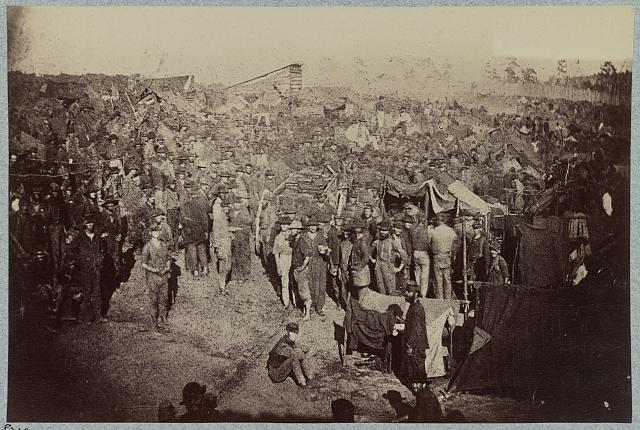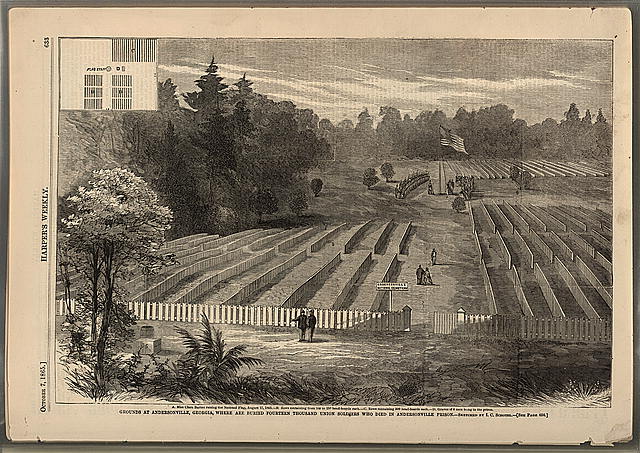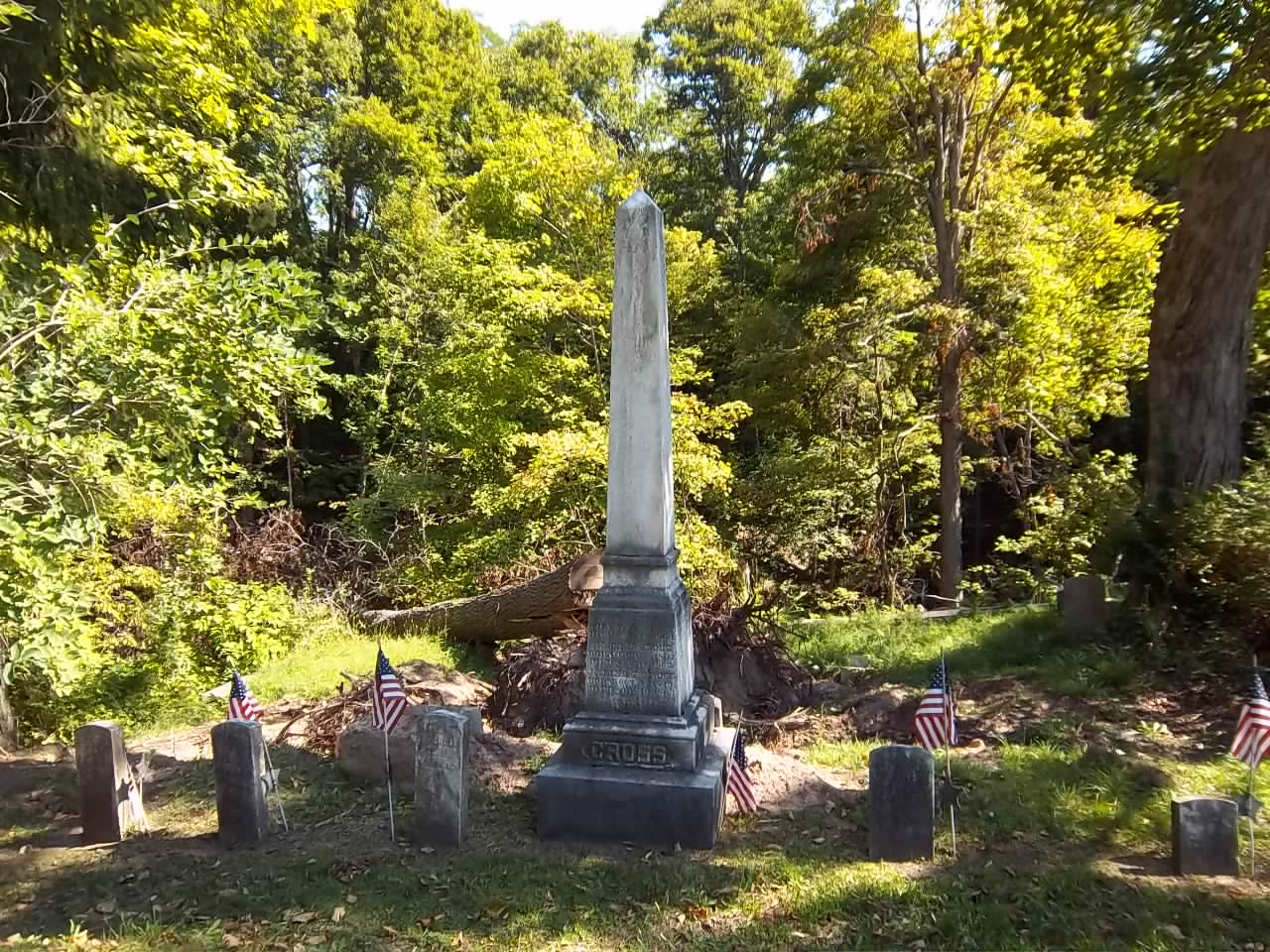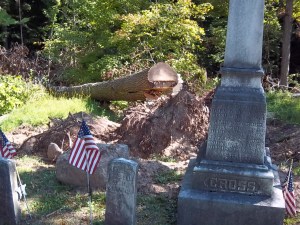fought for “the U.S. Army In the War of the Rebellion”
When I started wandering through Restvale Cemetery in Seneca Falls, New York looking for old grave stones decorated with new American flags, I was naturally drawn to a plot that indicated a whole bunch of men in the Cross family served in the Union army. According to the stones two of the family members died on the same day – September 16, 1864. That sounded like some potentially juicy history, but I didn’t learn any more details about the allegedly twinned deaths.
Walt Gable cleared up the mystery in his new book, Seneca County And The Civil War. As it turns out, none of the family members died on September 16th, but the Cross family was certainly dedicated to fighting for the Union cause.[1] William Henry Cross enlisted in the 50th New York Engineers in September 1861 when he was 53 years old. He injured himself jumping a ditch but survived the war. Five of his sons also served during the war. Amos N. Cross joined the 33rd New York Infantry in May 1861. He died of disease in September 1862.
Two Cross brothers joined the 4th New York Artillery. George M. was injured twice and mustered out in July 1865 while at D.C.’s Harewood Hospital. Asa D. survived the war but “was admitted to the Utica/Rome Asylum and … his father reimbursed Seneca County $100 for Asa’s care there.”
Two other brothers enlisted in the 148th New York Infantry. Lemuel B. was shot in the thigh at Cold Harbor on June 3, 1864. He never fully recovered but survived the war. James G. died 150 years ago this week:
He was captured on June 15, 1864, near Petersburg, Virginia. He was sent to the infamous Andersonville prison camp in Georgia, where he died of scurvy on September 13, 1864. He is buried in the Andersonville National Cemetery. He also has a gravestone in Restvale Cemetery in Seneca Falls.

Andersonville Prison, Ga., August 17, 1864. Issuing rations, view from main gate (Library of Congress)
After the war Seneca Falls’ GAR post was named to honor the Crosses.
This case provided more evidence that, while the rosters at the New York State Military Museum are a valuable resource, they are not totally accurate. I learned that you can’t believe everything you read in a cemetery. I’m pretty sure the uprooted tree in the background of the Restvale photos was knocked down by a microburst storm that tore through Seneca Falls in May 2012.

Grounds at Andersonville, Georgia, where are buried fourteen thousand Union soldiers, who died in Andersonville Prison (Harper’s weekly, 1865 Oct., p. 633.)
- [1]Gable, Walter Seneca County And The Civil War. Charleston, S.C.: The History Press, 2014. Print. pages 67-70.↩


